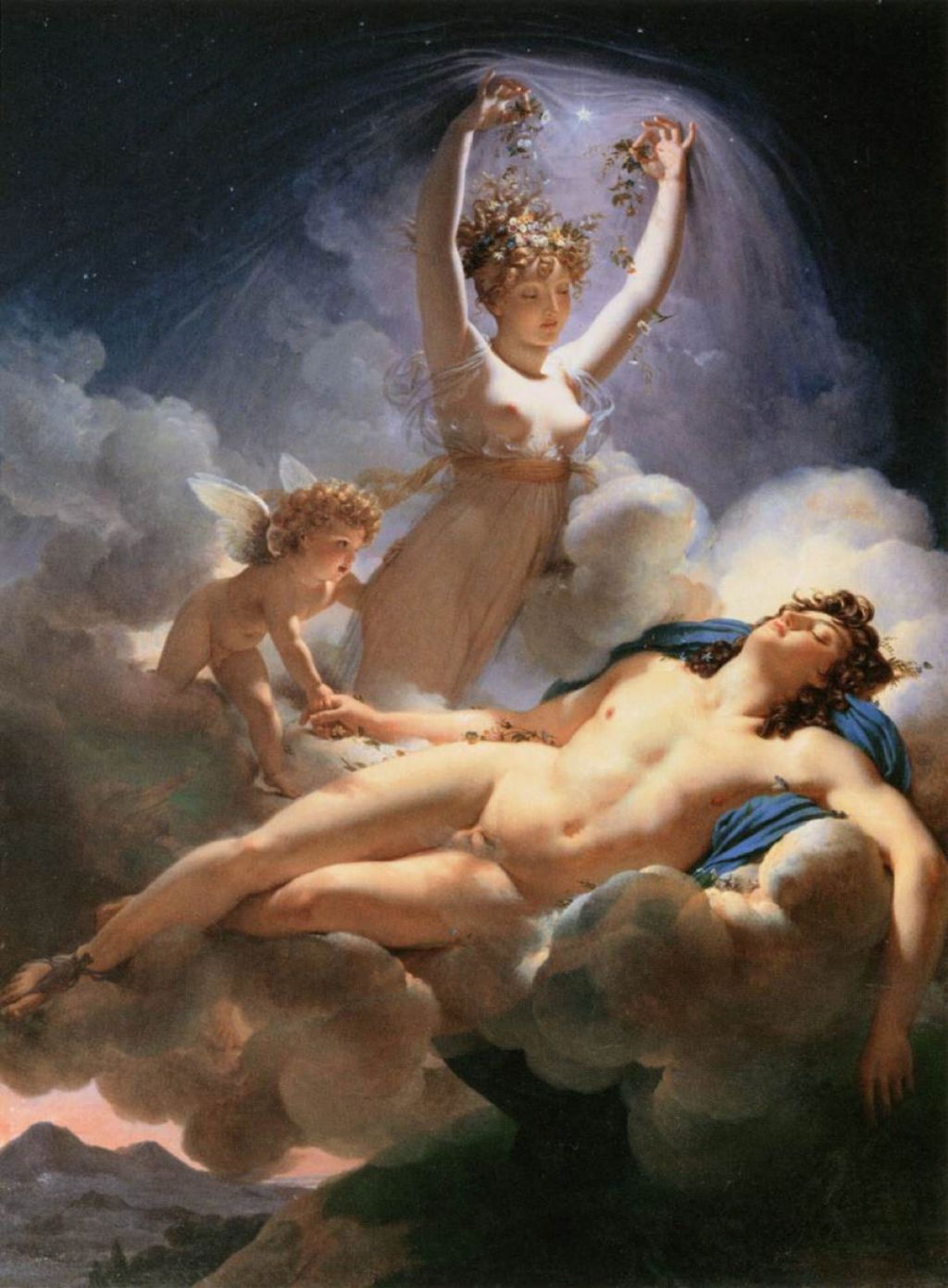The final story in Book 7 of Ovid’s Metamorphoses is its best, and a true jewel in the author’s crown. Although it has been told elsewhere, this account is by far the best. It is told by Cephalus, the envoy from Athens, to the sons of King Aeacus on the island of Aegina, following the king’s account of the Myrmidons.
The Story
Having told Cephalus of the plague and the Myrmidons that followed it, King Aeacus falls asleep, so his son Phocus takes Cephalus and his companions to their accommodation. There Phocus notices the unusual javelin which Cephalus is carrying, with its gold tip on a shaft of wood which he cannot identify. This leads Cephalus to tell him that the javelin killed his wife, and so to explain the circumstances.
Within two months of his marriage to the beautiful Procris, when he was laying nets to catch a deer at dawn, Aurora saw Cephalus and tried to abduct him (she has a track record of affairs with humans). Cephalus protested and explained to Aurora his love for his wife, and she let him go, warning him that if Aurora saw him again, he would regret ever marrying Procris.
As he went back to his wife, Cephalus started to worry whether his wife had been unfaithful to him. He became aware that Aurora had changed his appearance, and entered the city of Athens unrecognised. When he got home, his household and wife didn’t recognise him either, so Cephalus put Procris to the test: with his wife still thinking him a stranger, he offered her great riches to spend a night with him, and managed to get her to waver with uncertainty.
He then revealed himself to be her husband, and accused her of being unfaithful. She said not a word, but fled to the mountains, where she joined the followers of Diana.
Cephalus yearned for his wife, so begged her forgiveness, and admitted that he too would have given way when made such an irresistible offer. Procris returned to him, and the couple lived happily again together. She brought back with her gifts from Diana: a hunting dog who outran all other dogs, and the unusual javelin.
Then the city of Thebes was put into difficulty again, after Oedipus had broken the siege imposed by the Sphinx. This time the problem took the form of a wild beast which ate all its livestock. All the younger men, including Cephalus, went to hunt for the beast, but it eluded them and their dogs.
Cephalus then unleashed Diana’s hound to chase the beast. The dog caught the beast, but it broke free again. Cephalus prepared to throw his javelin, then noticed that his dog and the beast had suddenly been transformed into marble statues:
“I then turned to my javelin’s aid; and while
I poised it in my right hand, turned away
my gaze a moment as I sought to twine
my practiced fingers in the guiding thongs;
but when again I lifted up my eyes,
to cast the javelin where the monster sped,
I saw two marble statues standing there,
transformed upon the plain. One statue seemed
to strain in attitude of rapid flight,
the other with wide-open jaws was changed,
just in the act of barking and pursuit.
Surely some God — if any god controls —
decreed both equal, neither could succeed.”
Cephalus returned to his now blissfully happy marriage with Procris. He went hunting alone at dawn, always feeling safe with his javelin. As the heat of the day came on, he would call on an imaginary zephyr of the cool breeze, talking to it as if it was a real nymph. One day he must have been overheard, and word was taken back to Procris that he was meeting a woman when he was supposed to be hunting. His wife was shocked, but refused to accept the story without herself witnessing her husband’s deceit.
The following morning, Cephalus was out hunting at dawn again, and when he grew hot, he rested and spoke to his imaginary zephyr as usual. He thought that he heard a sound nearby, which he suspected was an animal. He turned and threw his javelin at that noise.
He next heard his wife’s voice, rushed towards it, and found her mortally wounded, with his javelin buried in her chest. He took her up into his arms and tried in vain to stop blood from pouring from the wound. Knowing that she was dying, Procris implored him not to take the zephyr as his wife. He then realised the fatal misunderstanding, that Procris believed that he had been unfaithful.
As Procris died in his arms, Cephalus tried to explain to her that the zephyr was only imaginary, and that seemed to bring her some comfort in her last moments.
Ovid ends the book with Cephalus and his audience in tears, as Aeacus arrives with his other two sons and the army which they have been raising to counter the forces of Minos, setting the scene for the start of Book 8.
The Paintings
In complete contrast to Aeacus’ story of the Myrmidons, that of Cephalus and Procris has proved very popular with painters, and has been told by several of the great Masters. Those paintings concentrate on two scenes from this long story: the abduction of Cephalus by Aurora, and the death of Procris by Cephalus’ javelin.
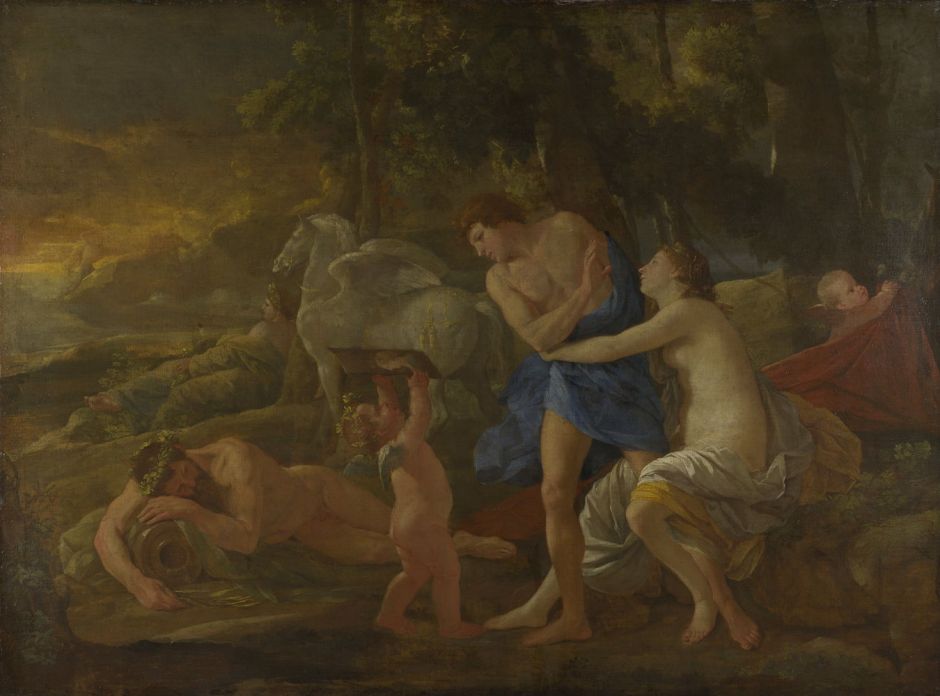
Nicolas Poussin’s Cephalus and Aurora (1630) shows the dawn scene of Cephalus trying to avoid the obviously amorous intentions of the goddess Aurora, who is seated and nearly naked. Behind Cephalus is the winged horse which draws the chariot of the dawn. A winged putto is holding up an image for him to view, presumably showing Procris, to help his resolve.
At the left is a river god. Beyond the horse is another deity bearing a coronet: although it is difficult to see, that might be Diana, given her association with hunting and this myth.
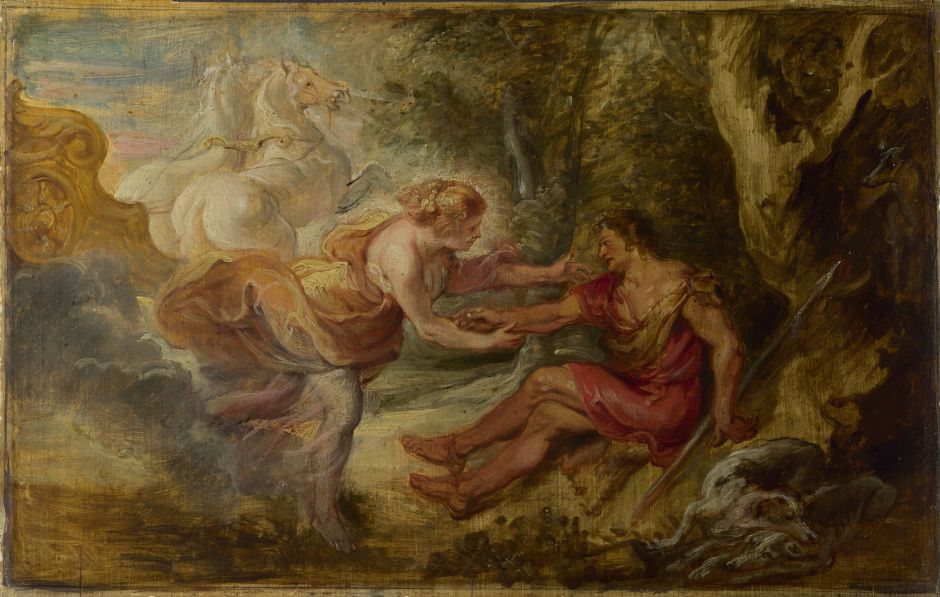
Peter Paul Rubens’ oil sketch of Aurora Abducting Cephalus was probably made in 1636-37, late in Rubens’ life, for his workshop to complete a painting for King Philip IV of Spain’s hunting lodge at Torre de la Parada, near Madrid.
In addition to showing the willing Aurora trying to persuade the reluctant Cephalus to join her in her chariot, it includes some details which are at odds with Ovid’s story: Diana’s hunting dog and javelin, which Procris gave to her husband after their reconciliation, later in the story. Here they may be intended as attributes to confirm his identity.

Over the following couple of centuries, there was a steady stream of paintings showing the abduction of Cephalus, but to my eye the next major work using this theme was Pierre-Narcisse Guérin’s romantic Aurora and Cephalus (1810). Instead of a substantial chariot, the seductive figure of Aurora is bearing a sleeping Cephalus aloft on a bed of cloud, as dawn breaks over the mountains below.
This fails to show any resistance on the part of Cephalus, though.
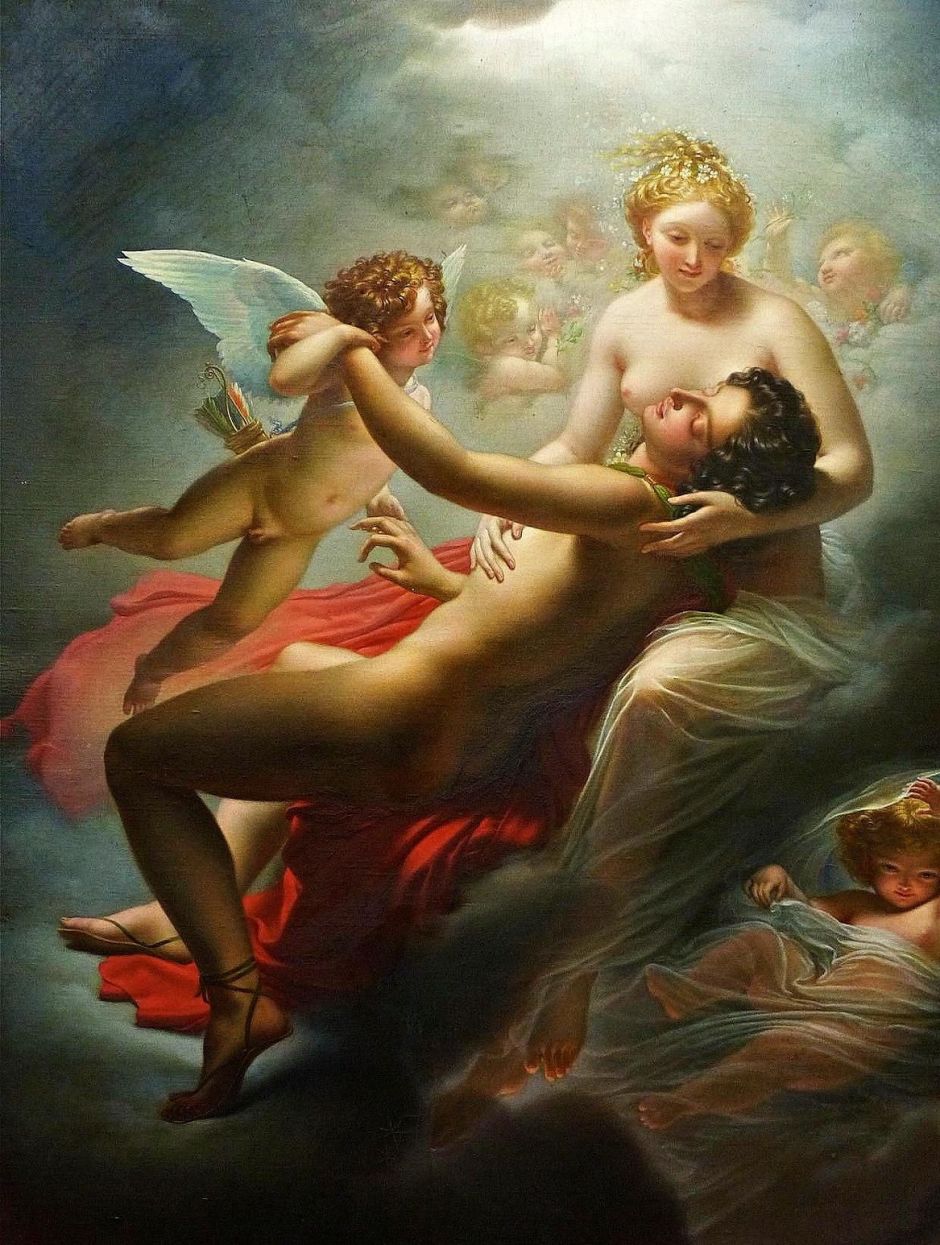
Forty years later, Pierre Claude François Delorme uses a similar motif recomposed into his Cephalus Carried off by Aurora (c 1851). This features interlocking arms and embraces quite ingeniously: Aurora cradles Cephalus’ shoulder and chest, Cephalus reaches out to Cupid, and Cupid back to Cephalus.
To modern tastes, the cherubic faces in the cloud behind Aurora are a little overdone, I suspect.
Of those paintings showing the tragic death of Procris, the greatest has to be one of the earliest, Paolo Veronese’s Cephalus and Procris (c 1580).

In the foreground, Procris has fallen, the javelin embedded in her upper abdomen, and her life is fading fast. Cephalus isn’t embracing her, though, merely holding her hand as he tries to plead his innocence.
Veronese leaves us with two small puzzles too. The first is the large hunting hound behind Cephalus’ right shoulder, remembering that Diana’s dog was turned into stone while hunting the beast of Thebes. Even more puzzling is another figure, and a second dog, in the distance, at the left edge of the painting. These might represent the first part of the scene, before Cephalus throws his javelin, in multiplex narrative.
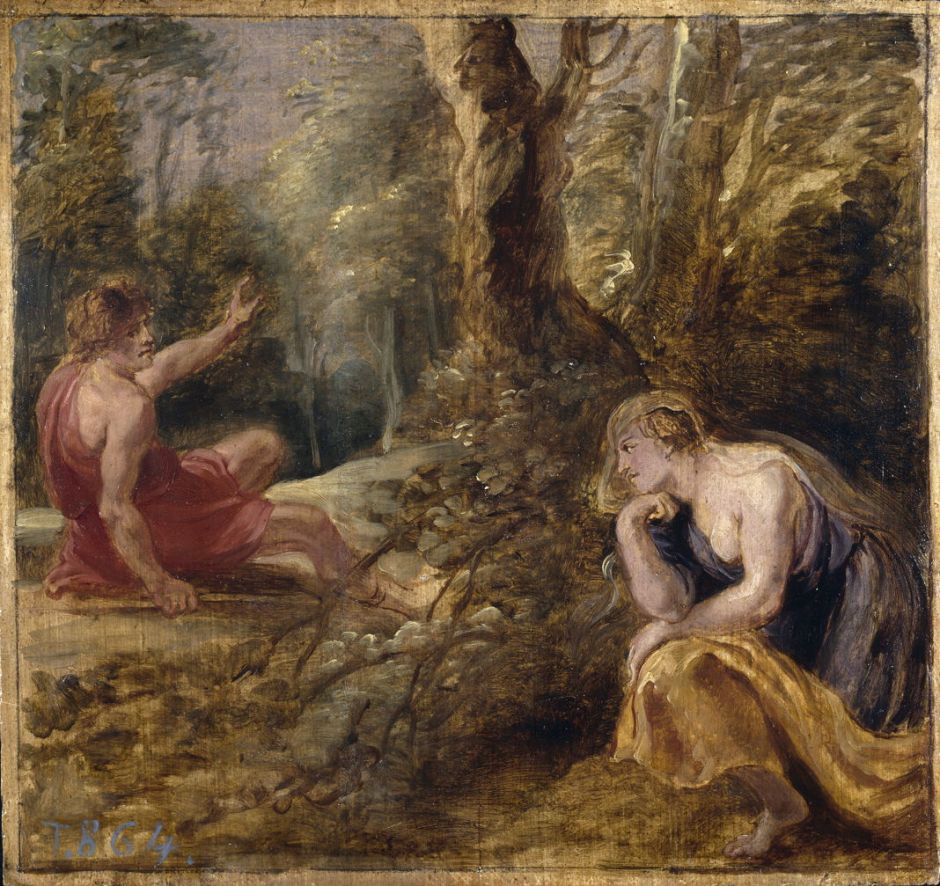
Peter Paul Rubens offers another oil sketch, of Cephalus and Procris (1636-37), which shows the couple just before Cephalus throws the fateful javelin, which rests at his side.
There is another painting which has been claimed to show The Death of Procris, but which is more accurately titled A Satyr Mourning over a Nymph, made by Piero di Cosimo in about 1495.

A brilliant painting, it uses the full width of a panoramic panel to show a satyr with his goat legs and distinctive ears, ministering to a dying or dead nymph, who has a severe wound in her throat. At her feet is a hunting dog, with another three in the distance.
There is no reason to show Cephalus as a satyr; Procris was impaled in the chest by the javelin; Procris was behind cover, where she was spying on Cephalus, not out in the open; and Cephalus had only one hound, a gift from Diana, which had in any case already been turned to marble. It’s a superb painting of another, quite different, story.
I think that I’ll take Guérin’s Aurora and Cephalus, wondering whether Cephalus really did reject Aurora’s advances, and the Veronese to complete this tragic tale.
The English translation of Ovid above is taken from Ovid. Metamorphoses. Tr. Brookes More. Boston. Cornhill Publishing Co. 1922, at Perseus. I am very grateful to Perseus at Tufts for this.

